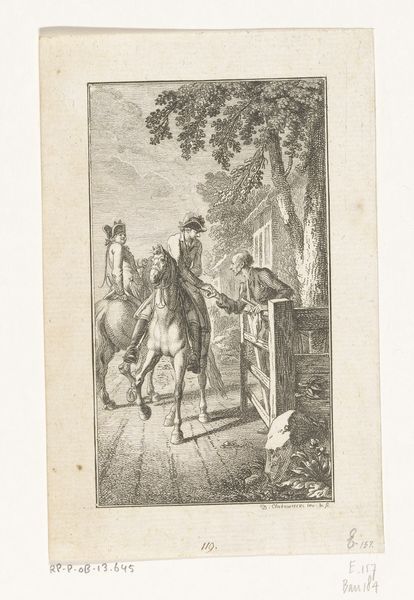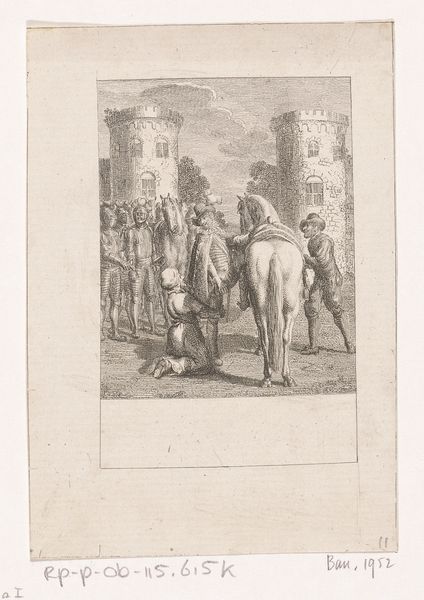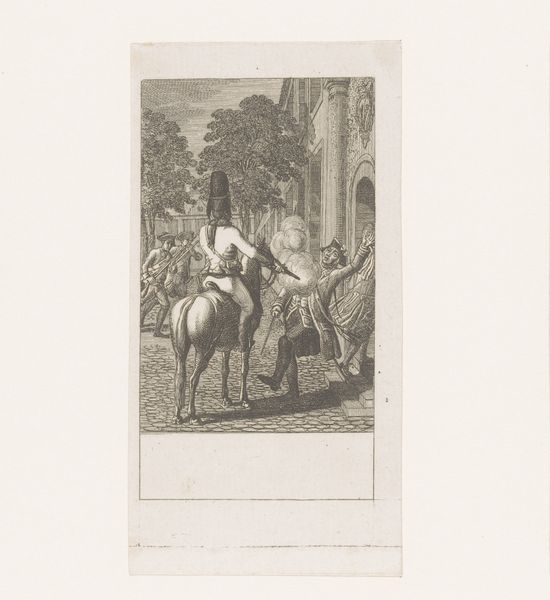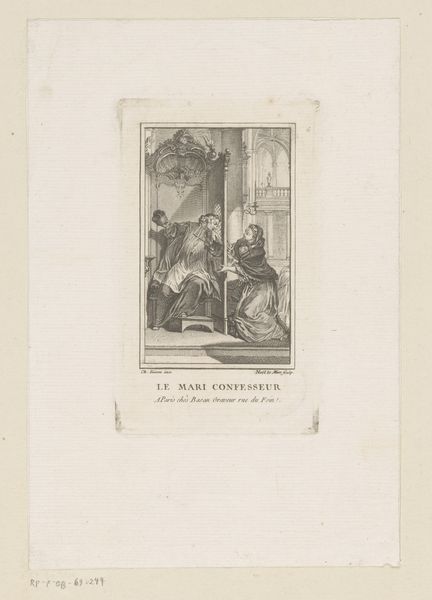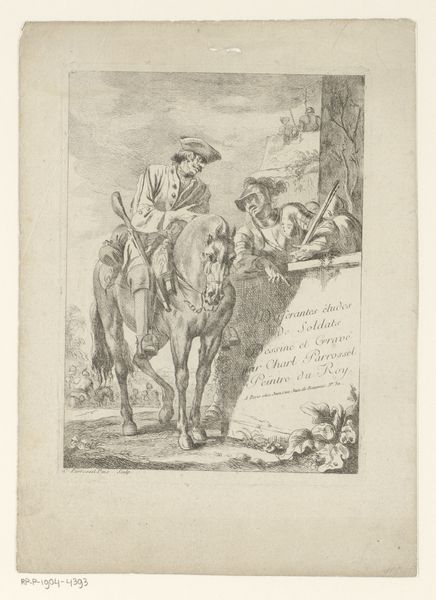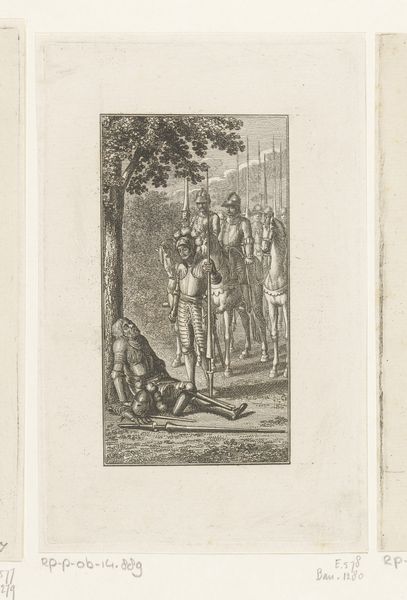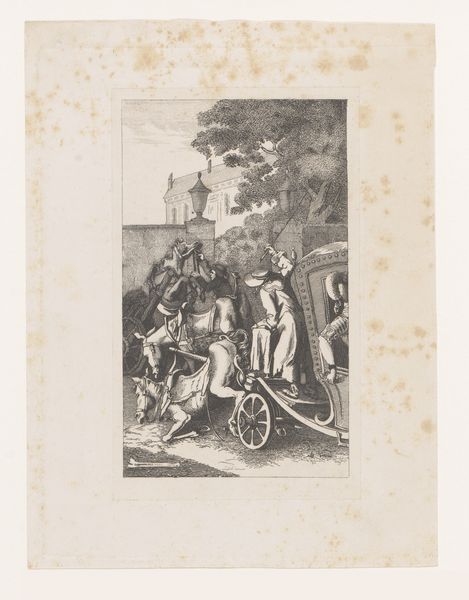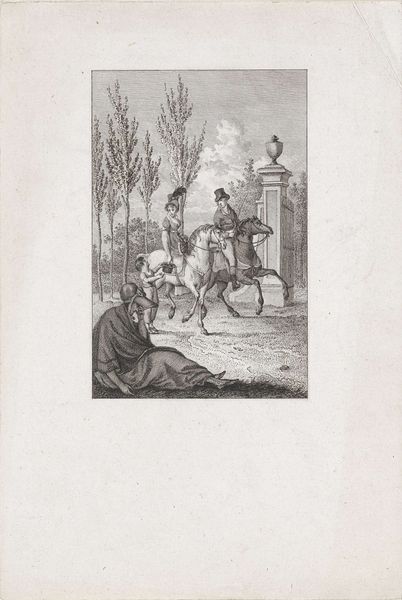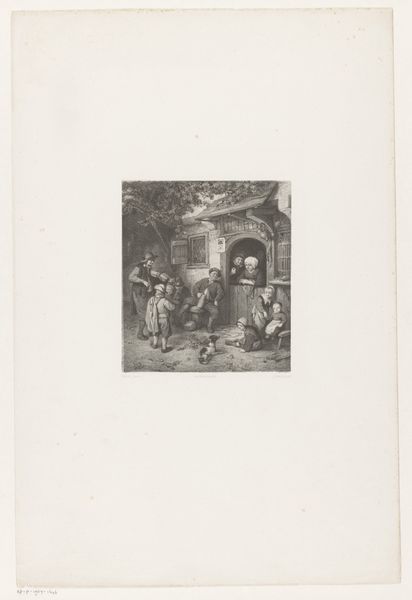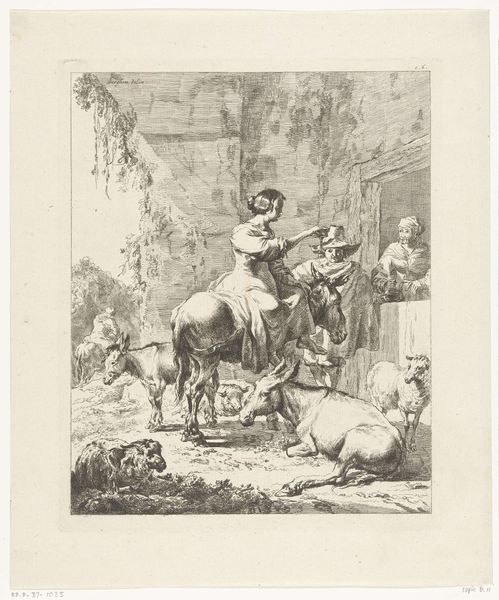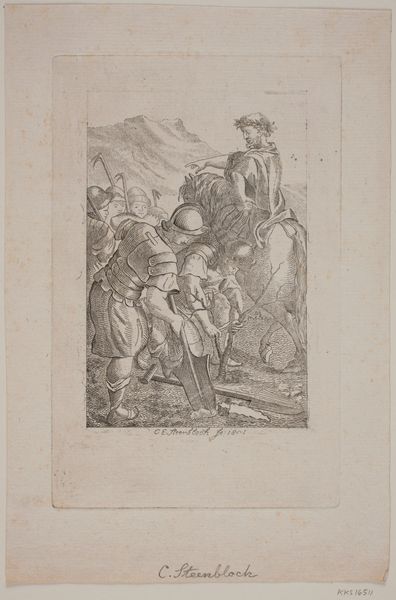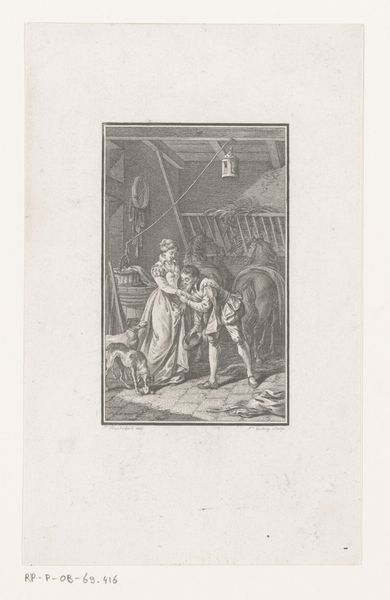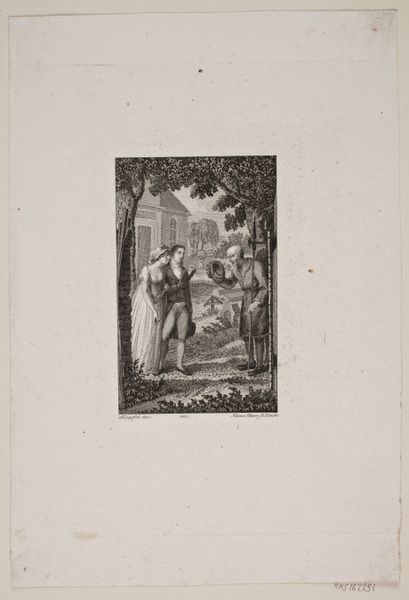
Coligny's onthoofde lichaam wordt door zijn kinderen aanschouwd 1799
0:00
0:00
print, engraving
#
portrait
#
narrative-art
#
ink paper printed
# print
#
pencil sketch
#
landscape
#
figuration
#
genre-painting
#
history-painting
#
engraving
Dimensions: height 116 mm, width 83 mm
Copyright: Rijks Museum: Open Domain
Curator: Here at the Rijksmuseum, we have Daniel Nikolaus Chodowiecki’s engraving from 1799, “Coligny's onthoofde lichaam wordt door zijn kinderen aanschouwd” which translates to "Coligny's Decapitated Body Is Viewed by His Children." Editor: Well, the starkness immediately strikes you, doesn't it? The rigid architectural lines, the delicate shading, they emphasize the horrifying subject matter, giving it a cold, almost clinical feel. Curator: Indeed. Chodowiecki, though, isn't merely presenting a scene, but constructing a pointed commentary. The engraving depicts the aftermath of the St. Bartholomew's Day Massacre, a brutal episode in French history. Admiral Coligny, a Huguenot leader, was one of the victims. Editor: The composition certainly directs our reading. That stark, central column… and then the father figure, he is positioned to command both his children’s and our own attention, as he gestures, almost didactic in his role. Curator: Precisely. And notice how the dogs at the base of the pillar, seem more emotive in some way than the stoic man ushering the children, this heightens the sense of disruption and moral decay that Chodowiecki wants us to examine within its sociopolitical context. Editor: Interesting! I can see the intentional starkness now; not just coldness, but an accusation. The minimal details encourage closer inspection of historical meaning and context, with formal simplicity almost serving to amplify the emotional discord. It forces engagement with its difficult content rather than allowing us to look away. Curator: And so the piece becomes less about immediate suffering and more about generational trauma and public accountability. He’s manipulating our emotions by employing semiotics; the image being presented so formally almost contrasts against its meaning. The power rests not only with its visceral subject but more specifically, on understanding and analysing its context within that horrific period in history. Editor: Absolutely, the use of stark engraving heightens this understanding of historical context by creating an emotional dialogue—in viewing this artwork now, we reflect on it’s intrinsic commentary with a newfound perspective on it's message. Curator: I agree; this is why I find this engraving endlessly thought-provoking: It makes you actively question. Editor: Indeed, a chilling visual statement, executed with incredible formal restraint for maximum political impact.
Comments
No comments
Be the first to comment and join the conversation on the ultimate creative platform.
